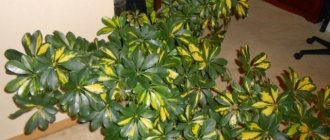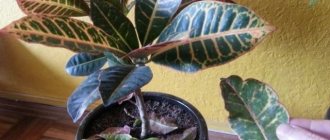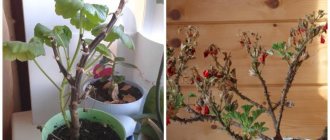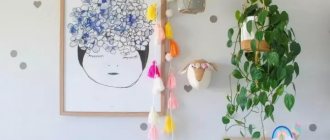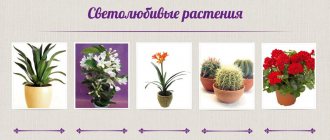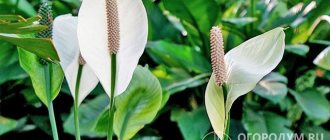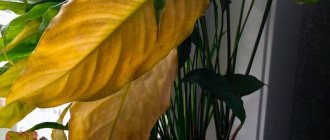Author: Tamara Altova. December 05, 2018
Category: Houseplants.
Plants such as saintpaulias, gloxinias, azaleas and other beautifully flowering crops attract attention with their charming flowers, but the flowering of ficus, monstera, shefflera and other decorative foliage plants is far from so attractive, so we grow them exclusively for the leaves that require special care. Although in fairness it must be said that well-groomed leaves of flowering plants make them attractive not only during flowering. In this article, we will tell you how to care for the leaves of indoor plants so that they are always in the best shape.
How and why to wipe the leaves of indoor plants?
- If plants with dense leaves in the form of ficuses, dieffenbachias, crotons , etc. “live” in pots on your windowsills, then their leaves can be given a matte shine using polishes.
- But yucca, dracaena, clivia and other similar plants are not worth the risk. Rubbing the leaves this way will make them hurt.
- You can only polish already formed plant leaves. For young people who have just recently started, this procedure is contraindicated.
- You can wipe the leaves of indoor plants to make them shine only on already formed leaves . You can’t touch the back side - it’s harmful for them.
- The leaves are wiped not only to give them a waxy-matte beauty, but also to prevent parasites from appearing on the plants, and to remove dust deposits.
The leaves will shine
Germination of seeds and cuttings
Previously, gardeners germinated seeds in gauze, but this was inconvenient - when the seed produced roots, they often got tangled in the threads, and removing them was problematic.
Several germinated seeds were sure to be injured. Plus, dry material absorbs well and retains moisture.
Place the seeds in a dried napkin folded in half at a distance of 1-3 cm from each other:
- Place the seeds in the middle, on the fold.
- Cover them with the free edge.
- Water it.
- Add water once every 2-3 days.
When the roots appear, you can easily remove and replant the sprouts. Do not throw away the used materials; they can be used to fill pots as a means of drainage.
It works the same way with cuttings. They need to be wrapped in water-soaked napkins. Add water as needed when you see that the material has dried out. Leaving seeds or cuttings without water is dangerous; they may die, especially if they have already begun to germinate and take root. The same method will help transport cuttings over long distances.
Store-bought leaf wipes
- In specialized stores, you can choose from an abundance of products for your plants a polish or spray , the properties of which you can ask your sales consultant.
- Among the advantages of store-bought products: they are effective, quickly give the leaves an amazing shine, and have a beneficial effect on the development of plants.
- Among the disadvantages: possible toxicity that accumulates in plants; Besides, store-bought polishes are not cheap.
Purchased product
How to use purchased polishes and sprays for wiping leaves:
- First of all, you need to carefully study the instructions that are given on each package of industrial products. Usually they are either first sprayed onto the fabric, or done directly onto the leaf itself, and then rubbed with a soft cloth until all the leaves begin to shine.
- Immediately after you have processed all the plants you planned, be sure to ventilate the room in which you worked. When carrying out the treatment, use protective equipment (goggles and a mask), and upon completion of the procedure, take a shower and change clothes.
Air humidification
Most indoor plants are tropical or subtropical species. The former prefer to live in a warm climate (18-22°C) in winter, while the latter prefer cold conditions at a temperature of about 10°C. Palm trees, bromeliads, and arrowroots love “tropical” conditions; citrus fruits, for example, need “subtropics.” But no matter what temperature certain plants choose, they all need high humidity of at least 65%.
In winter, when the central heating system is turned on, a problem may arise with maintaining the required level of humidity: the air is dried out by hot radiators so that not only plants, but also people suffer. Plants react to low humidity with dry tips and edges of leaves, yellowing and falling off.
To create favorable conditions for green pets, you can use one of the following methods:
- install a household humidifier in the room;
- hang a wet towel on the batteries and change them as they dry;
- place containers filled with clean water next to flowerpots - as it evaporates, it will provide the necessary moisture to the leaves;
- place flower pots on pallets with wet expanded clay;
- Spray the plant leaves frequently with a spray bottle and give them a warm shower.
You can choose any available method or combine them together - it is important not to ignore the problem, because otherwise the plants will suffer from excessive dry air.
Inexperienced gardeners often try to save drying plants by increasing watering. But this should not be done under any circumstances - during the dormant period, moisture consumption by the roots decreases, and overwatering is dangerous due to rotting of the root system. Only moisturizing the leaf can help.
How to wipe the leaves of indoor plants for shine: a DIY remedy at home
How to wipe the leaves of indoor plants to make them shine? You can wipe the leaves of home flowers with polish made at home. We will list you the means that are most effective and harmless.
- You need to mix one part beer (it must be non-alcoholic ) with two parts water. Tested: beer is great for wiping plant leaves and does not harm them. But don't forget to dilute it with water.
- By rubbing the leaves with succinic acid , you will not only give it gloss, but also have a healing effect. To wipe the leaves, you will need to dilute one tablet of succinic acid in 150 ml of water, moisten a soft cloth in this mixture and wipe them until they shine.
- castor oil , undiluted with water , and rub the leaves with it. Castor oil produces a healing effect on the plant.
- Using a silicone brush, apply crushed egg yolk , and then rub using a paper towel - after this procedure the plant will be filled with shine. But in the summer it is undesirable to use egg yolk, since under the influence of heat it will emit a specific smell that insects will flock to.
- Mix one part water and two parts milk , soak a sponge in the mixture and wipe the flower leaves with it. The shine from this product is not as active as from others, but it works and, moreover, is completely harmless to plants.
- You can also wipe orchid leaves with a regular banana peel. Mash the inner side of the peel in your hand and rub it on the leaves of the indoor plant. After rubbing with the peel, particles will remain on the leaves - they will need to be wiped off with a soft cloth.
- You can take one part citric acid, two parts glycerin and dilute with a small amount of water. Orchid leaves will shine when rubbed with this mixture, but glycerin is not the best remedy for plants.
Leaf care
Use a cloth or full shower
About dry and wet cleaning
There are plants that do not tolerate wet cleaning well:
- violets and other flowers with velvety leaves that retain water;
- succulents with thick leaves. They accumulate moisture, and as soon as there is an excess of it, the leaves immediately fall off.
For dry and wet cleaning, use a cloth or foam sponge. Fleecy leaves are cleaned with a soft toothbrush, shaving brush or paint brush. During the procedure, movements go from the stem to the edge of the leaf.
When wet cleaning, the leaves can be wiped with a cotton pad soaked in milk or beer. The result is wonderful: the dust does not curl up, and the greenery becomes bright and shiny.
Shower
In order for the shower to bring more benefits to green “pets”, you need to follow the following tips:
- The flowers should be watered the day before so that excess moisture does not linger in the pot.
- The soil must be tightly covered with film.
- Adjust the jet (pressure, temperature).
- Tilt the flower pot and place the crown under the stream for half a minute.
- Let the water drain.
- Flowers should dry in a room where it is warm and free of drafts.
Hot shower
A hot shower has a temperature of 40-60 degrees. Recommended for flowers with lush foliage. We spill hot water on the leaves, trunks and soil in the pots. The result is visible after two hours. After this, the flowers are transformed, becoming vigorous and bright.
The benefits of such a shower are obvious:
- cleanses of impurities;
- causes the growth of new shoots;
- leaves receive moisture;
- hot water - prevention against pests and pathogenic microflora of plants;
- the root system is strengthened.
What is the best way not to wipe the leaves of indoor plants?
The best way not to wipe the leaves of indoor plants:
- When beeswax , the leaves lose their ability to breathe. In addition, the leaves develop an uneven shine and become covered with wax pellets. Wax can also clog the mouth of the leaves.
- When using alcoholic beer in the form of a polish, the plant begins to hurt, becoming covered in spots, as if from a sunburn.
- When using alcohol (ethanol), the leaf plates are damaged; Due to overdrying, the leaves become covered with whitish or brown spots.
- Glycerin clogs the mouths of the leaves, although it gives off an excellent shine. But it is better to use castor oil or succinic acid, which are very beneficial for plants.
We will also tell you:
- Do I need to tie garlic leaves in a knot and when?
- Why do ficus leaves turn yellow and fall off?
- How to quickly dry leaves for a herbarium
- Tomato leaves curl in a greenhouse
- The leaves and stem of the planted cabbage seedlings have turned blue
Leaf hygiene
The impeccable appearance of a plant indicates, first of all, that it is healthy. But sometimes even a healthy plant looks untidy, and the reason for this may be dust settled on the leaves.
Any housewife knows how quickly dust accumulates in a room, so regular cleaning is a routine but necessary procedure. Dust settled on the leaves of plants, when water gets on them, turns into dirt, which must also be removed regularly: dust and dirt interfere with the process of photosynthesis and evaporation of moisture, attract pests and create favorable conditions for the development of diseases .
Procedure for cleaning leaves:
- wipe the leaf plates once or twice a week with a soft material - a damp cloth or sponge;
- You need to remove dust from both the top and bottom sides of the leaves;
- Carry out the procedure in the morning or afternoon so that the leaves have time to dry by evening;
- very dusty or dirty leaves can be washed with soapy water, which should then be rinsed off with clean water. If you use alkali to wash the leaves, cover the substrate with film.
Leaves covered with fluff or lint are not washed, but are cleaned of dust with a brush with soft, thick bristles.
Additional illumination of plants
Lack of light in winter is one of the main problems of a gardener. Before our eyes, plants begin to “lose weight”: leaf plates and stems become longer and thinner, and lose color saturation and turgor. Therefore, the struggle for light continues throughout the winter.
In January, daylight hours begin to lengthen, but this is still not enough for the plants to feel good. To improve the situation, you can move all house flowers to southern or eastern window sills or provide additional illumination with phytolamps for several hours a day.
It is important to know that regular incandescent lamps do not provide the spectrum that plants need for photosynthesis, and leaving the room lights on in the evening does not help the plants.
For additional illumination, fluorescent lamps or special lamps with a blue, red and yellow spectrum are suitable. They can replace the sun's rays and provide significant support for flowers in winter. Install phytolamps at a height of 20-30 cm above the plants and turn on the lighting at the same time every day - green pets will soon thank you with a cheerful, cheerful appearance and new leaves!
